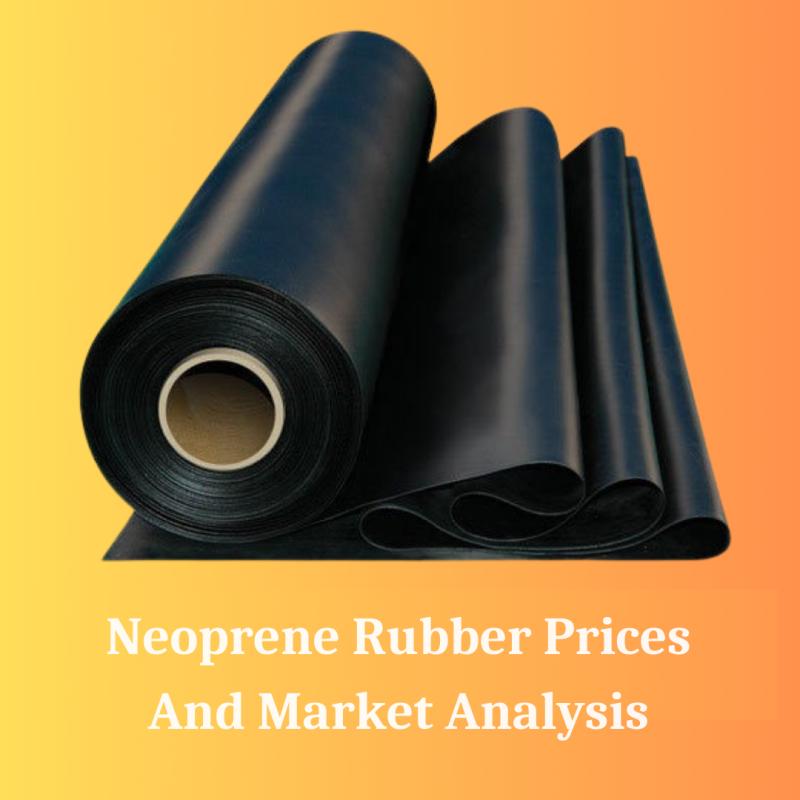Neoprene Rubber Prices in 2025: What to Expect

Neoprene rubber is a versatile material used in various
industries, from automotive to medical and even fashion. Known for its
durability, flexibility, and resistance to oil, heat, and weathering, neoprene
is widely used in everything from wetsuits and gaskets to adhesives and
coatings. As we look ahead to 2025, the pricing of neoprene rubber will be
influenced by several factors, including raw material availability, demand from
key industries, technological advancements, and environmental considerations. This
article will explore the trends, forecasts, and factors that are likely to
shape neoprene rubber prices in 2025.
>> Get Real-time Neoprene
Rubber market Prices, trends, forecast and market analysis: https://tinyurl.com/2wmppd7w
The global neoprene rubber market has experienced
fluctuations in prices in the past, driven by changes in raw material costs,
shifts in global supply and demand, and economic conditions. As we move toward
2025, several key trends will play a role in determining the cost of neoprene
rubber.
One of the most significant factors that will impact neoprene rubber
prices in 2025 is the availability of raw materials, especially chlorine
and butadiene. These are two essential components in the production of
neoprene. Chlorine is a byproduct of salt, and butadiene is a byproduct of
petroleum. Any fluctuations in the price of these raw materials can directly
affect the cost of neoprene production. For instance, if the prices of oil and
natural gas rise, it could lead to an increase in the cost of butadiene, which
would likely result in higher neoprene rubber prices.
The demand for neoprene rubber will continue to be a major
driving force behind price trends. Neoprene is used in a wide range of
industries, with significant demand coming from the automotive, construction,
and apparel sectors. The automotive industry, for example, uses neoprene for
seals, gaskets, and belts, while the construction industry relies on neoprene
for expansion joints, adhesives, and coatings. Additionally, the growing
popularity of outdoor sports like surfing has led to increased demand for neoprene
wetsuits, especially in regions with colder water temperatures.
In 2025, the global automotive market is expected to
continue its shift toward electric vehicles (EVs), which may have an impact on
neoprene rubber prices. EVs require various rubber components, including seals
and gaskets, many of which are made from neoprene. As the demand for EVs grows,
so will the demand for neoprene rubber in this sector. However, there could
also be some pressure on prices due to potential supply chain challenges and
the increasing competition for raw materials needed to manufacture EVs.
Another key factor influencing neoprene prices in 2025 will
be advancements in production technology. Manufacturers are constantly seeking
ways to improve the efficiency and sustainability of neoprene production. New
production methods, such as the use of renewable feedstocks or more
energy-efficient processes, could help lower production costs and stabilize
prices. However, the adoption of these technologies may take time, and
initially, the investment required to implement them could lead to higher costs
in the short term.
Environmental concerns and regulations will also play a
crucial role in shaping neoprene rubber prices. In recent years, there has been
a growing focus on sustainability within the manufacturing industry. As
consumers and businesses become more environmentally conscious, there is
increasing pressure on companies to reduce their carbon footprints. This has
led to greater emphasis on sustainable materials and greener manufacturing
processes. For neoprene, this could mean a shift toward more eco-friendly alternatives,
or the development of "green" neoprene made with renewable resources.
While this could be beneficial for the environment, it may also increase
production costs, which could result in higher prices for neoprene rubber
products.
Looking at the global market, the neoprene rubber industry
is expected to continue growing over the next few years. As demand for durable,
flexible materials rises, particularly in emerging economies, the market for
neoprene is set to expand. However, the market is also likely to face
challenges, particularly with fluctuations in raw material prices and the
continued push for sustainability.
As for pricing trends in 2025, it is likely that neoprene
rubber prices will experience moderate growth, driven by increasing demand and
potential supply chain disruptions. The automotive industry’s transition to
electric vehicles, coupled with the continued expansion of construction and
outdoor sports sectors, will likely keep demand high for the neoprene. However,
rising raw material costs, environmental regulations, and technological
advancements in production processes may cause some price fluctuations.
The overall market size for neoprene rubber in 2025 is
projected to increase, with key regions such as Asia-Pacific, North America,
and Europe continuing to be the largest consumers of the material. China,
India, and the United States are expected to remain major players in the
market, with demand driven by manufacturing, construction, automotive, and
sporting industries.
While predicting the exact price of neoprene rubber in 2025
is difficult due to the many variables at play, raw material costs,
technological advancements, and environmental considerations will all have
significant impacts. To get real time commodity price update with pricewatch. The neoprene rubber market
is set to grow, with demand continuing to rise in key sectors.
However, businesses and consumers should expect some price
volatility, with potential for moderate increases due to supply and demand
pressures, environmental regulations, and the adoption of new production
technologies. For those involved in industries that rely on neoprene, staying
informed about these trends will be key to managing costs and navigating the
changing landscape of neoprene prices in the coming years.
Post Your Ad Here
Comments